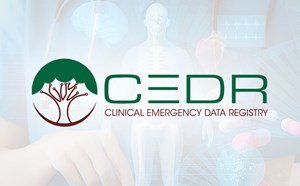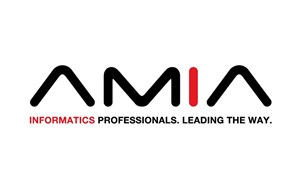
ACEP & Emergency Medicine Foundation (EMF) Data Summit
Subject: Informational Report on ACEP / Emergency Medicine Foundation (EMF) Data Summit
Introduction
ACEP has invested considerable resources and effort in developing our Clinical Emergency Data Registry (CEDR). CEDR was started in 2015. In the past three years, ACEP has made tremendous progress in making CEDR successful. As of 2018, there are 200+ ED groups and hospital systems participating in CEDR that represent approximately 800+ emergency departments, 15,000 providers, and 20 million annual patient visits.
Background
A joint ACEP and EMF Data Summit was held at ACEP HQ on February 8, 2019. The goal of summit was to define the requirements, scope, and approach for building a Data Analytics Platform to enable research with CEDR data to:
- Support improvements in the clinical practice of Emergency Medicine
- Increase efficiency in the Emergency Department
- Provide data for disease management and research
- Improve clinical outcomes for patients and the community at large
EMF has an interest in ensuring that the CEDR Data Analytics Platform is properly developed to allow emergency medicine researchers and other entities (e.g. government agencies, researchers from other disciplines, and pharmaceutical or device companies) access to valid data. This Summit explored EMF’s possible future role in the administration of the data analytics platform. Specifically, leadership from EMF and the ACEP Scientific Review Committee took part in a 1-day meeting to define the research capabilities of CEDR and map a future course of action for directed grant proposals. This is a tremendous opportunity for both ACEP and EMF to help shape the direction of CEDR research and design an efficient process for related funding. Dr. Vidor Friedman, Dr. James Augustine and Dr. John T. Finnell represented ACEP. Dr. Phillip Levy, Peggy Brock, and Cynthia Singh represented EMF. Half of the fund for the Summit came from the ACEP Quality Division and half from EMF’s endowment.
Perceived Benefits of Data Analytics Platform
Objective: Support of EM Data Research
CEDR accesses significant data resources from emergency medicine practices. ACEP will build the systems required to provide ACEP the ability to support research entities in statistical research on this information, while keeping Protected Health Information (PHI) and Personally Identifiable Information (PII) safely within the ACEP organization.
Strategy
ACEP will use an iterative approach to build out the data warehouse and research capabilities, leveraging ACEP college membership support in committees and sections, Healthcare IT industry partners, and internal resources. An initial pilot based on existing CEDR data acquisition and a focused set of data domains will provide the basic data set to build statistical research options through multiple data analytics platforms likely to include Tableau, SAS, Python, and R.
Operational Tactics: ACEP has already begun the identification of the data domains based on existing knowledge of the current CEDR data feeds in place. Concurrently, the ACEP team is engaged in discussions with Healthcare IT partners with specific expertise in big data analytics for the healthcare market.
Discussion and Actions
More than 20 experts joined the Summit and discussed emergency care research data requirements and industry trends. The following concepts were discussed:
Data Completeness
ACEP needs to understand how completely each data element is represented by the data received through CEDR, and whether or not the data set contains the appropriate information to understand the clinical concept described. For example, knowing the medication name alone may not be sufficient. Understanding the clinical domain of medication administration may also require knowledge of dose, time of administration, route of administration, duration of administration, etc.
Data Accuracy
ACEP must also verify that data values correctly represent the concept they describe. Data accuracy in healthcare information is not always binary. While data interpretation has a very high confidence when based on national coding standards such as SNOMED, RXNORM, LOINC, etc., most healthcare data is not codified. ACEP wishes to understand the level of confidence a researcher can assume when using each data element to accurately reflect the clinical information. ACEP seeks to implement an existing or new nomenclature for specification of the confidence level for various data elements.
Data Value
ACEP desires to understand the values of various data elements as they relate to researcher desirability, uniqueness of the data elements in the research industry, expected frequency of requests, and other factors that would contribute to the overall value of including particular data values in a research database. ACEP expects to use this information in a cost-benefit analysis to determine which data elements to include in a research database.
Data Sets/Dependencies
ACEP needs an understanding of the most common groupings of data values into data sets which it will offer to researchers. In addition, ACEP wishes to know how best to combine disparate data sources, such as Electronic Health Record (EHR) and billing data. Understanding the key data elements and concepts that will likely be requested by researchers will assist ACEP in designing the architecture of the research data warehouse.
Follow-up Summit
Data Summit v2 is being planned for Sunday, July 7th at ACEP HQ to further discuss and make decisions on the following topics:
- Finalize minimum standardized dataset for EM research
- Research Platform Infrastructure requirements
- Research enablement process
- Role of EMF
- Role of Data Analytics Centers
- Cost Models and sharing of costs/revenues
Deliverables
Upon completion of the research goals outlined in the prior section, the project team will deliver three formal reports as described below.
Report: Recommended Data for Research Warehouse
This report will outline the recommended data values currently captured through the CEDR program which should be included in a research data warehouse. The specific topics covered in the report should include:
- Data elements and their recommended value domains including data types, formats, relational references, and interpretations
- Data element dependencies to meet data completeness
- Data accuracy assessment, which may vary based on original source
- Standardized naming conventions for data elements, if applicable
- List of data sets recommended as part of this project
- Data element value analysis
This report will be delivered in a spreadsheet or relational database such as Microsoft Access.
Report: Data Quality Gap Analysis and Recommendations
A second report will detail the specific gaps in the current CEDR data collection and storage, make recommendations to remediate the gaps, and describe the impact if not remediated. The specific topics covered in the report should include:
- Gaps in data element accuracy
- Gaps in data element completeness
- Gaps that reduce the value of the data element
- Gaps in data element storage and representation in CEDR data sets
- Recommended changes to close individual element gaps
- Impact if particular gaps are not remediated
This report is expected to be delivered in a narrative format with specific details in spreadsheet format.
Report: Recommended Data Sets for Research Purposes
A third report will specify the data sets recommended to provide optimal value to research requests. The report should cover the following topics:
- Data sets identified including the specific data elements to complete the data set
- Expected research groups/organizations who may be interested in the data set
- Areas of research the data set would likely support
- How to codify data completeness and accuracy for the data set
- Minimum data set size and/or configuration to ensure anonymity of the underlying data in terms of
- Patients
- Provider Group
- Healthcare Organization
- Estimate of qualitative value for the data set for research purposes
This report is expected to be delivered in a narrative format.
Pawan Goyal, MD, MHA, PMP, MS, FHIMSS, CPHIMS
Associate Executive Director, Quality



